This is part of a series of posts where we ask one of our volunteers or visitors to say a few words. Sam arrived at Casalinho this week and has kindly allowed us to share his online thoughts. Here, he describes how the animals assist us with our composting system.
A Visitor’s Perspective: Sam’s Diary
After my parents went home, I took a couple buses travelling 6 hours north of Lisbon to central Portugal and arrived to my final WWOOF Farm; Casalinho. The farm is located in a beautiful location secluded from society and surrounded by mountains covered in green trees.
Casalinho
While searching for farms in Portugal I was immediately drawn to Casalinho because it’s a permaculture project and the owners Andrea and Jeroen teach classes about it. But first off, what is permaculture? I found a perfect description on the Casalinho website.
“Permaculture is a sustainable design system that provides for human needs while having positive effects on the surrounding environment.
It is based on the ethics of earth care, people care and fair share, and provides practical solutions to the global crises we are currently facing.
Permaculture is for EVERYONE, regardless of their education, background, or previous experience. Permaculture is NOT just about trees, or just about gardening! You don’t need loads of land to practice it and it’s a design method that can be applied to all social systems.”
— Casalinho, Permaculture Center
My goal at Casalinho is to learn as much as I possibly can about permaculture and how their system operates. I hope to take all these lessons and principles and apply them to my lifestyle and future gardens back home. While working here I constantly ask questions. Andrea always seems to drop some permaculture wisdom. The first thing us WWOOFers do every morning is take care of the animals. So I decided to write my first blog post about them.
At Casalinho they rarely eat meat. When they do it’s meat they’ve raised themselves. Andrea explained that they choose to do this for ethical and environmental reasons. The livestock at Casalinho are goats, chickens, rabbits, and guinea pigs. All these animals are kept in the same area. Every day we have to feed the animals, and what they survive on blows my mind. Weeds! Every day the goats and chickens receive two wheelbarrows of weeds from the gardens. We also throw in catepillars pulled off the brassica plants which quickly get devoured by the chickens. At all the community gardens I’ve worked at weeding is a daily task. But we always have to put these weeds in a seperate pile from the compost to keep them from eventually seeding in our plant beds. At Casalinho weeding is a daily chore, but it feels better knowing it’s going to some hungry goats and chickens. Also, it doesn’t cost a thing!
Livestock living in harmony
Every day the goats are milked and we have it with cereal for breakfast. Andrea also makes cheese with her goat milk and hopefully I can learn about this process. After the goats are milked they get a long walk in the grassy fields.
Behind the closed doors on the floor of the animal pen are the rabbits.
Above the bunnies are guinea pigs. These rodents also eat weeds everyday. But they can’t have any soil in their diet so we have to cut long grasses and only feed them the leaves.
The entire animals pen also operates as a gigantic compost system. Any food scraps are dropped inside the pen for the goats. All these animals are turning weeds and scraps into nitrogen rich manure. Every few months they clear out all this manure and use it as compost for the veggies. With this system these animals provide both fertilizer for the gardens and delicious meals for the farmers.
You can see the original of Sam’s article, and read more of his adventures here.
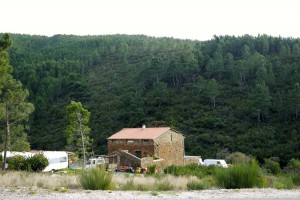
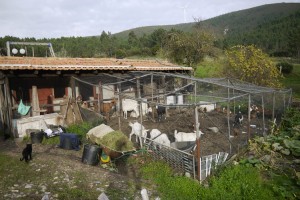
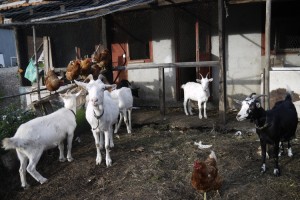
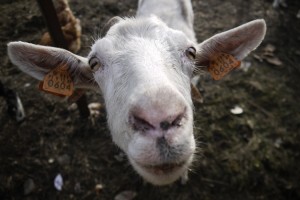
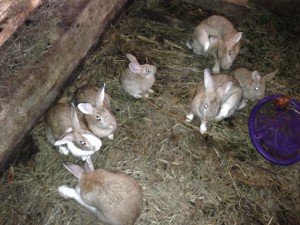
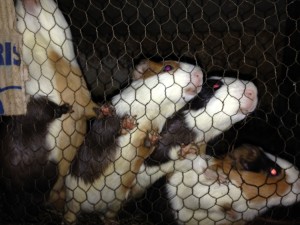

Leave a Reply